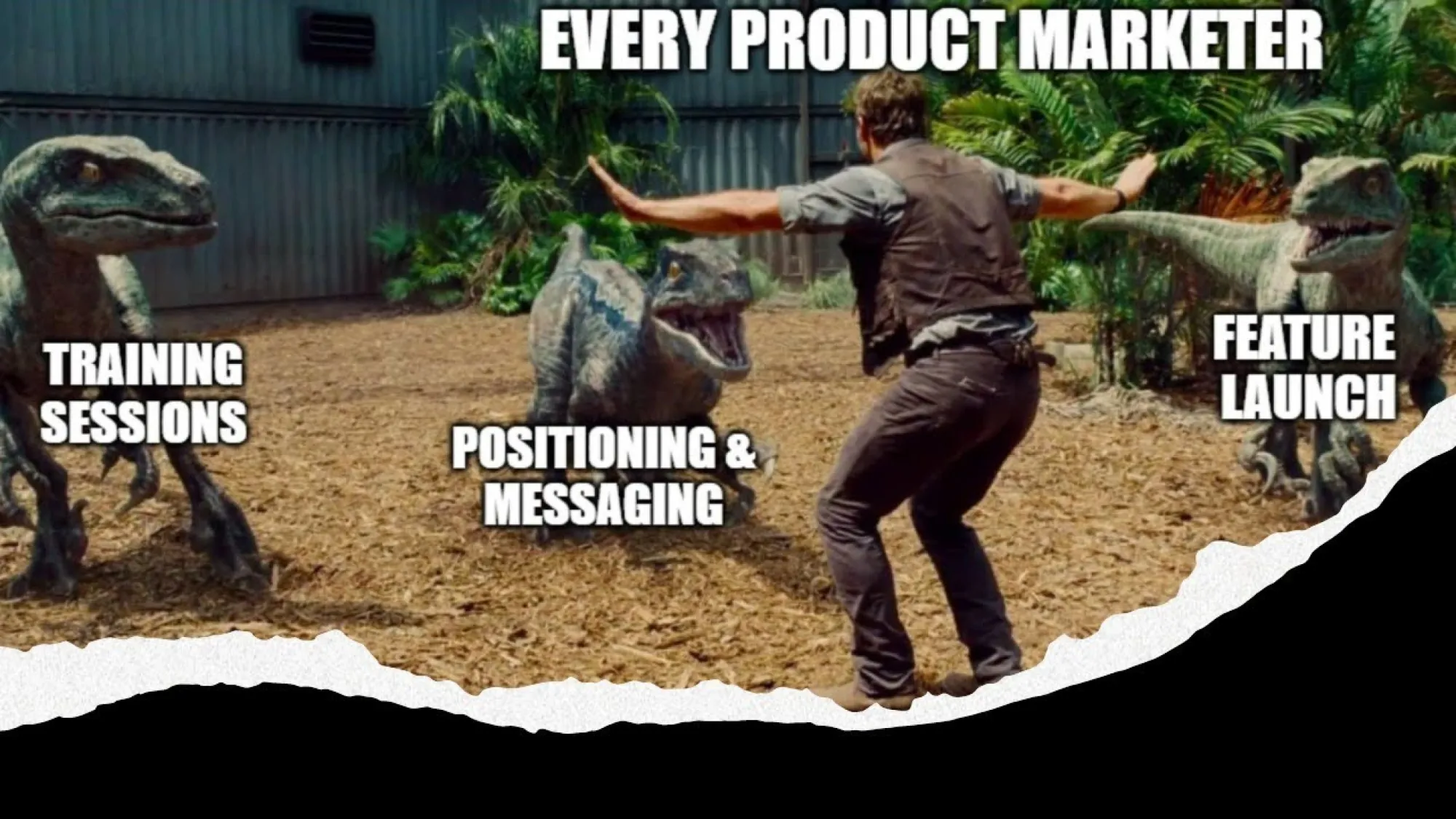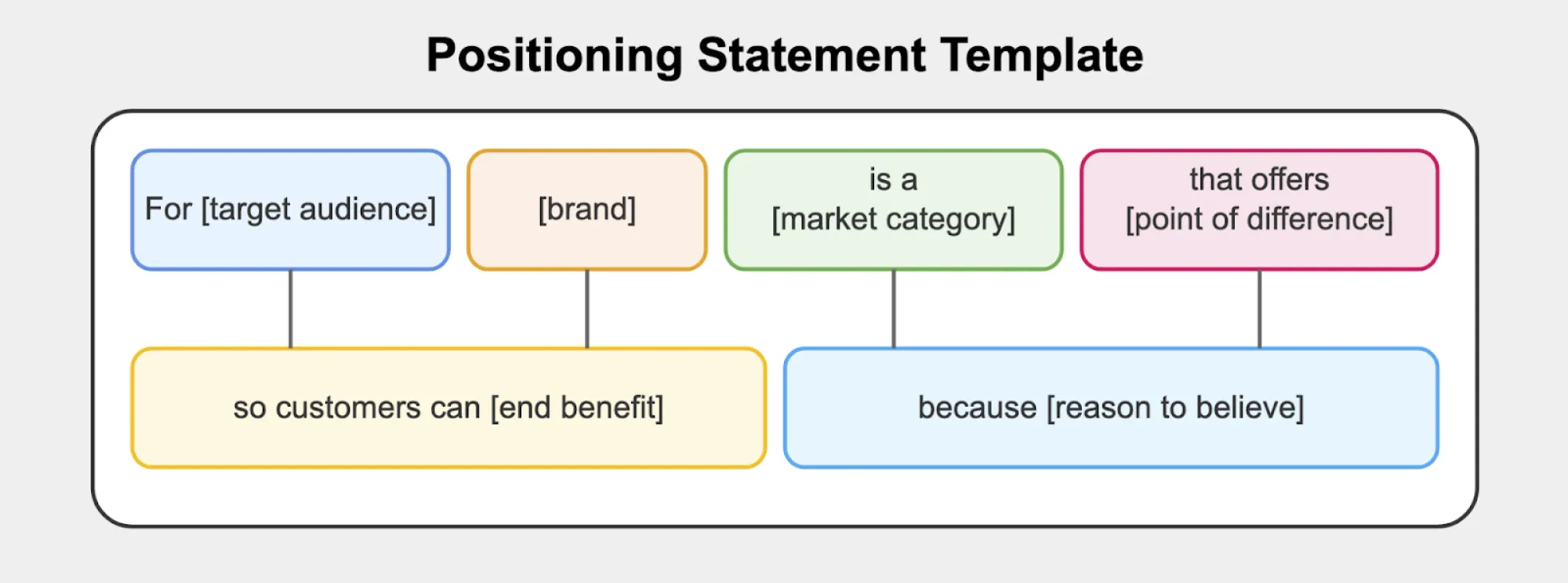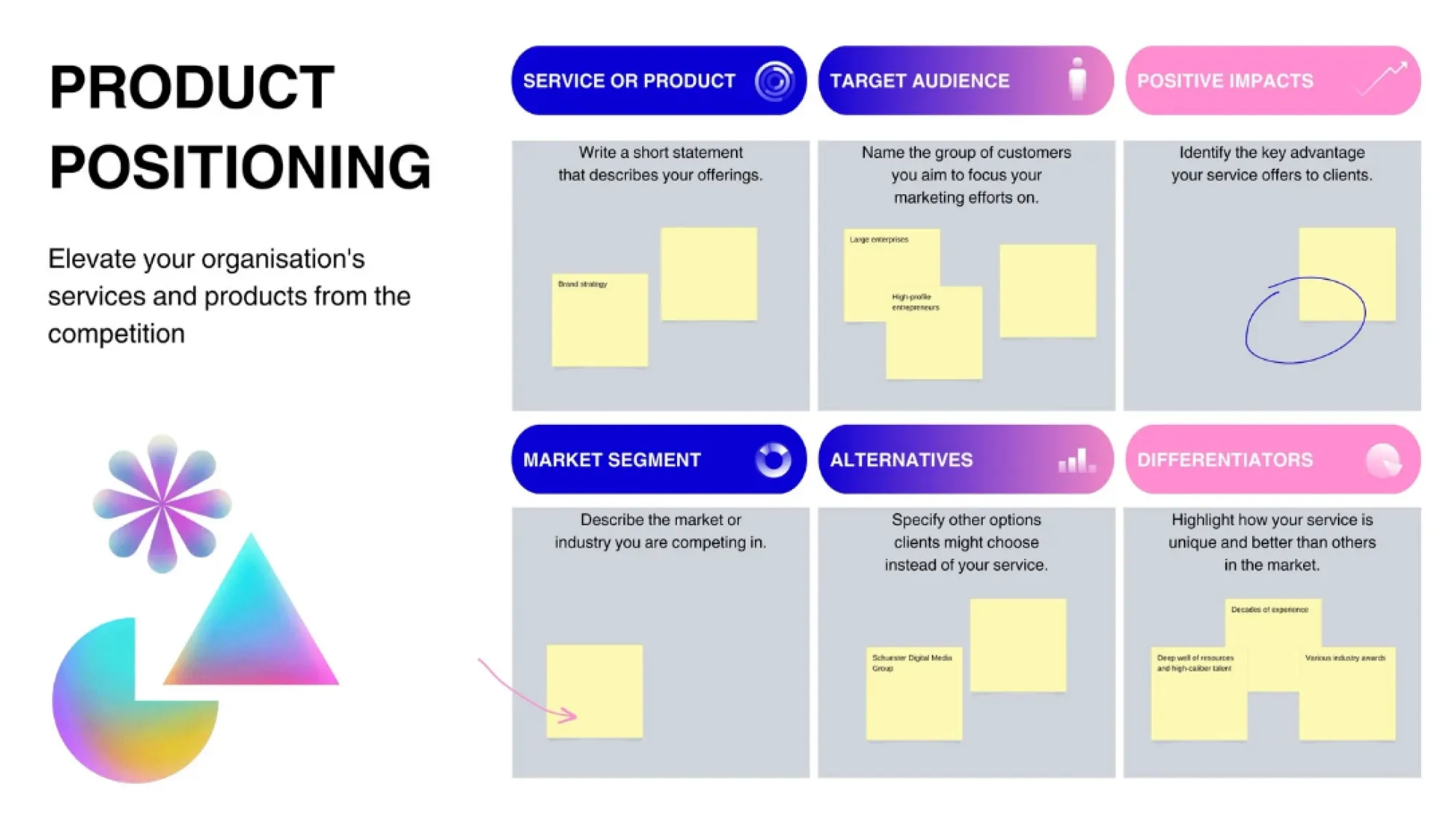Shape perception, own the market: how to craft your positioning statement template

You’re crafting a positioning statement for your SaaS product.
Except your mind is as blank as a new Google Doc.
“We’re an app…that does stuff with AI?”
“The best solution for…people who need solutions?”
“Revolutionizing the way you..use your phone, I guess?”
You sigh.
These aren’t positioning statements; they’re crimes against SaaS product marketing.
Don’t sweat.
We’ll share exactly how to create a positioning statement template that distills what makes your product offering unique and valuable (IRL examples included).

Main components of your positioning statement
To clarify, a positioning statement is a concise description of a product or brand's unique value proposition and target audience. It's an internal business tool that defines how your business wants its products or services to be perceived in the market.
More than just a description, an effective positioning statement plays a strategic role in guiding your SaaS product marketing and development efforts, differentiating your product from competitors, and ensuring consistent messaging across all internal channels and customer touchpoints.
A powerful positioning statement clearly defines your product's unique value proposition and why customers should choose it.
It should address four key elements:
Target audience
Crafting a positioning statement template starts with really knowing your target audience. The folks whose needs and challenges your SaaS product is meant to solve. Your product should be the solution that makes them say, "Where have you been all my life?"
While your target audience probably isn’t a monolith. For the sake of positioning statement, you’ll want to define them broadly, for example, “eCommerce companies” or “IT administrators.” It’s specific enough to give a clear picture but extensive enough to encompass several audience segments within a niche.
Market category
Your market category is the specific segment or classification within the broader marketplace where your product or service belongs. It could be something like “cloud-based project management software” or a “payment-processing platform” that’s your sandbox, where you play and compete.
Defining your market category gives you a competitive edge. Maybe there’s an overlooked market corner, and your SaaS product is the perfect fit. Suddenly, you’re in a stronger market position or can create a new subcategory tailored to your product's strengths.
Unique value proposition
A value proposition is "What's in it for me?" from your customer's perspective. It's the magic you're promising to bring into their lives.
Here's a fictitious example:
"TaskMaster Pro is the AI-powered project management solution that adapts to your team's unique workflow, automating tedious tasks and providing actionable insights.”
So, ask yourself:
- How are you better compared to the competition?
- What goodies are you delivering to your customers?
- What makes your brand the cool kid on the block?
- Why can't folks live without it?
- What's your product's superpower?
It's not what you think is awesome - it's what your customers find awesome.

Reasons to believe
We refer to evidence that backs up your product claims as "reasons to believe". Customer testimonials, awards, and stand-out features confidently arm everyone from your sales reps to potential customers.
Such concrete examples turn your positioning statement from alleged claims into a compelling story. As a founder, you know that at some point, your team will have to prove why your product is the best.
5 steps to crafting a positioning statement
FYI: Ideally, your positioning statement is a svelte 25-30 words. Here’s how you slim down to the essentials:
1. Research your market and audience
Controversial hot take: most people shoot in the dark when it comes to "knowing your audience." Slapping together a few demographic tidbits and calling it a persona? That's like expecting to build the next social app with nothing but a 'Learn HTML in 24 Hours' book and a can-do attitude.
Knowing your audience comes down to being a mind reader (of sorts)—understanding exactly what your customers need, even when they can't articulate it themselves. It's decoding their unspoken desires and then communicating your product's value to them in a language that resonates deeply.
2. Identify your unique selling points
Your unique selling proposition is a list of standout features that set you apart from competitors and resonate with your target audience.
- What features or benefits do you offer that your rivals don't?
- Is it your cutting-edge technology, your unparalleled customer service, or perhaps your sustainable practices?
- How do you make your customers' lives easier, better, or more exciting?
Another fictitious example:
“TechMaster Pro is the only project management tool that automatically optimizes team workflows using AI, cutting meeting time by 50% and boosting productivity by 30%.”
Note: There's a difference between a unique selling proposition (USP) and a unique value proposition (UVP). A USP focuses on why customers should choose your product, while a UVP focuses on why they should choose your company.
3. Draft the statement
There’s nothing fancy to it. Just follow this positioning statement template:
For [target audience], [brand] is a [market category] that offers [point of difference] so customers can [end benefit] because [reason to believe].

What it sounds like when applied to Airbnb:
“For local and international travelers, Airbnb is the only booking website that connects you to unique experiences all over the world because we offer the largest selection, most diverse, top-rated, and personalized places to stay.”
It’s okay if you don’t get it right the first time. Or the second, or the third.
4. Refine and test
Have multiple versions of your positioning statement with slight nuances in focus, language, or emphasis. Then, assemble a feedback group that includes a cross-section of your target audience, industry experts, and marketing, sales, and product team reps.
Your internal stakeholders provide insights on market trends, customer pain points, and product capabilities that will sharpen your positioning. Keep in mind that your positioning statement should resonate with your audience and accurately represent your brand's unique value propositions.
How to use your positioning statement
So, you’ve have settled on your SaaS positioning. How exactly do you harness this newfound clarity to captivate your audience and dominate your market?
Incorporate it into SaaS product marketing and sales strategies
When you're knee-deep in product specs and user stories, it's easy to lose sight of the bigger picture. But your positioning should shine through if you're crafting a blog post, designing a feature announcement email, or planning your next big marketing push.
When you're planning your next campaign—be it a content series, LinkedIn ads, or a cheeky TikTok challenge—make sure it's not just aligned with your positioning but amplifies it. Your positioning is the core value you're promising users, so every touchpoint, from onboarding emails to in-app messaging, must reinforce that promise.
Maintain consistency across all channels
Your positioning is something you do. Every click, every tooltip, and every onboarding email should communicate your product's unique value. If you're positioning as the most user-friendly analytics tool out there, your platform better be easy for baby boomers to use.
Users should get the same vibe from your product demos and sales team chats. Your positioning must be instantly recognizable, regardless of where they encounter it. So, when planning a webinar or designing a new feature, always ask: "Does this align with our positioning?" If not, it's time to pivot faster than a scrum master in a daily standup.
Inspiring and effective positioning statements
As promised, here are real-life examples. Learn. Analyze. Own your market.
Hubspot
"Since 2006, HubSpot has been on a mission to make the world more inbound. Today, over 100,000 customers in more than 120 countries use HubSpot's award-winning software, services, and support to transform the way they attract, engage, and delight customers. Composed of HubSpot's CRM, Marketing Hub, Sales Hub, Service Hub, CMS Hub, and Operations Hub, HubSpot gives companies the tools they need to grow better."
Why it’s effective: This positioning statement effectively communicates HubSpot's value proposition by highlighting its longevity, global reach, and mission. It showcases their comprehensive product suite and the transformative impact on customer relationships.
Apple
“Apple emphasizes technological research and advancement and takes an innovative approach to business best practices — it considers the impact our products and processes have on its customers and the planet.”
Why it’s effective: A dual focus on innovation and responsibility creates a compelling narrative that resonates with Apple's target audience and differentiates the brand in the crowded tech market.
Gig Wage
"Gig Wage uses proprietary technology for payroll services and compliance to offer control and flexibility to contractor-dependent businesses. This platform is specifically for the 1099 economy to manage, pay, and support happy independent workers."
Why it’s effective: It addresses business and contractor needs, differentiating the company in the payroll services market while emphasizing its niche focus on the gig economy. The statement succinctly conveys Gig Wage's core offering and target market.
How to maintain a strong positioning statement
Keeping your SaaS positioning is a two-part job: regular check-ups and trend-spotting.
First, schedule positioning reviews. Are your key messages still resonating? Maybe your "easy integration" claim isn't as unique as it was six months ago. Time to pivot.
Then, there's trend alignment. With SaaS, standing still is the same as moving backward. Yesterday's "AI-powered" is today's baseline expectation.
Keep your positioning strategy sharp by:
1. Digging into market research: What are users buzzing about on Product Hunt?
2. Monitor competitors: Did Salesforce just roll out a new feature?
3. Listen to your users: What about that feature request you've been ignoring?
Speaking of user feedback, did you know Command AI lets you capture user insights with in-app surveys? Our survey feature makes gathering feedback on new features easy and gauging product satisfaction.

Iterate, and iterate again
A killer positioning statement is like a perfectly optimized algorithm - it gets the job done efficiently and elegantly, and leaves your competition wondering what hit them. It’s also continually updated according to user preferences.
Now, start crafting a positioning statement like your SaaS depends on it. Because, let's face it, it does.
If you're still staring at a blank Google Doc, desperately willing a positioning statement into existence, remember: Rome wasn't built in a day, but they were consistently laying bricks. Start writing, keep iterating, and you'll have a rough draft before you know it.
